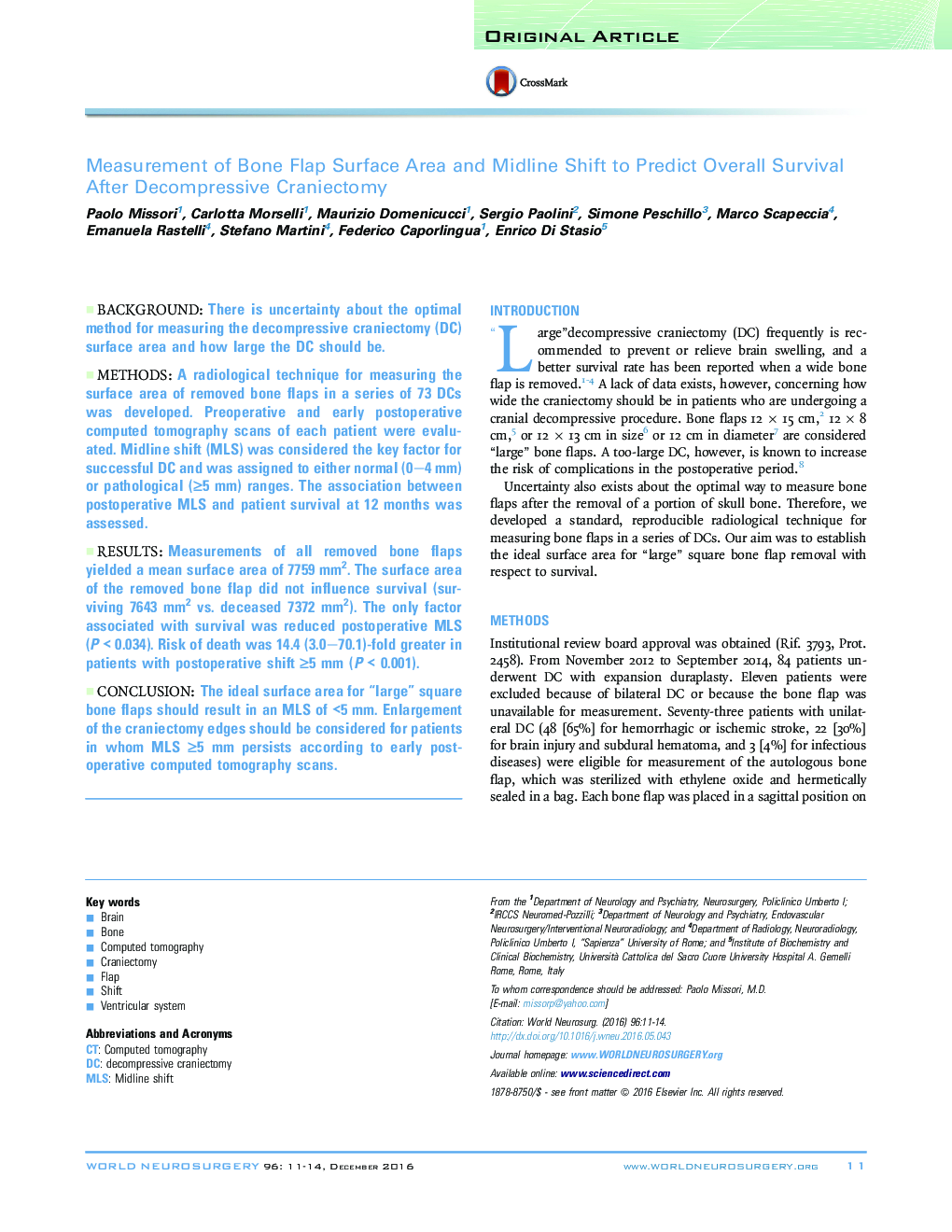| Article ID | Journal | Published Year | Pages | File Type |
|---|---|---|---|---|
| 5635000 | World Neurosurgery | 2016 | 4 Pages |
BackgroundThere is uncertainty about the optimal method for measuring the decompressive craniectomy (DC) surface area and how large the DC should be.MethodsA radiological technique for measuring the surface area of removed bone flaps in a series of 73 DCs was developed. Preoperative and early postoperative computed tomography scans of each patient were evaluated. Midline shift (MLS) was considered the key factor for successful DC and was assigned to either normal (0-4 mm) or pathological (â¥5 mm) ranges. The association between postoperative MLS and patient survival at 12 months was assessed.ResultsMeasurements of all removed bone flaps yielded a mean surface area of 7759 mm2. The surface area of the removed bone flap did not influence survival (surviving 7643 mm2 vs. deceased 7372 mm2). The only factor associated with survival was reduced postoperative MLS (P < 0.034). Risk of death was 14.4 (3.0-70.1)-fold greater in patients with postoperative shift â¥5 mm (P < 0.001).ConclusionThe ideal surface area for “large” square bone flaps should result in an MLS of <5 mm. Enlargement of the craniectomy edges should be considered for patients in whom MLS â¥5 mm persists according to early postoperative computed tomography scans.
